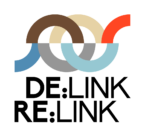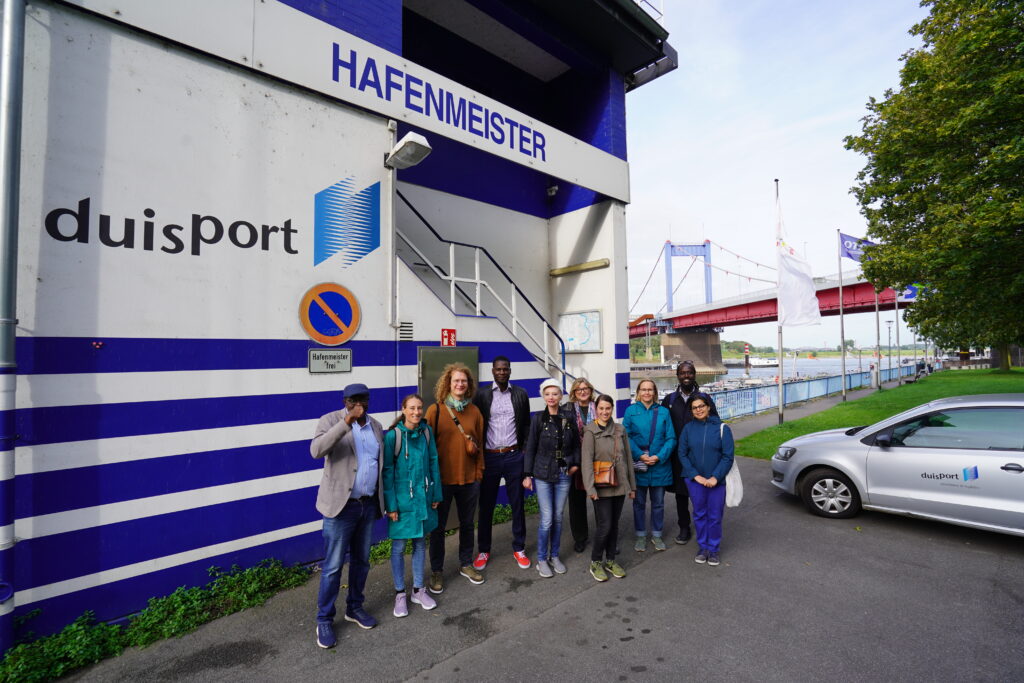
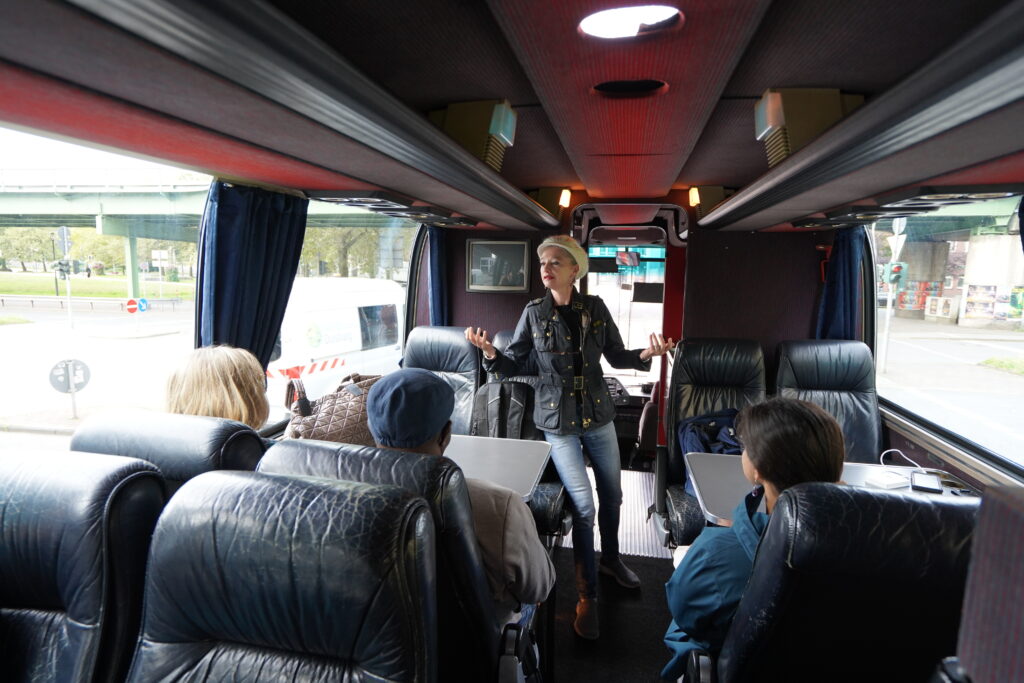
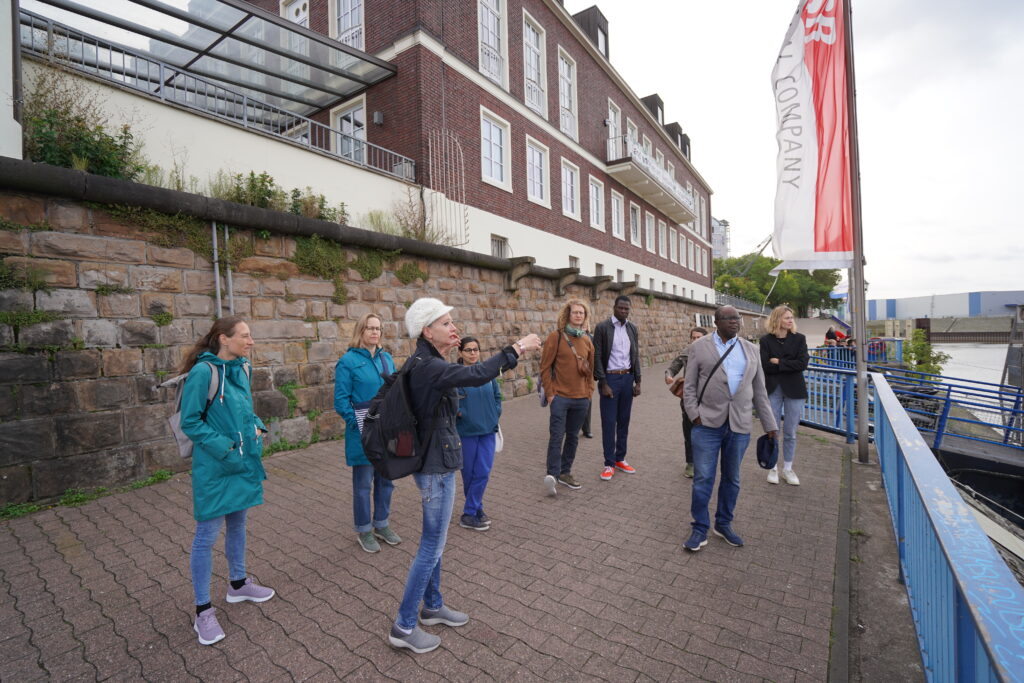
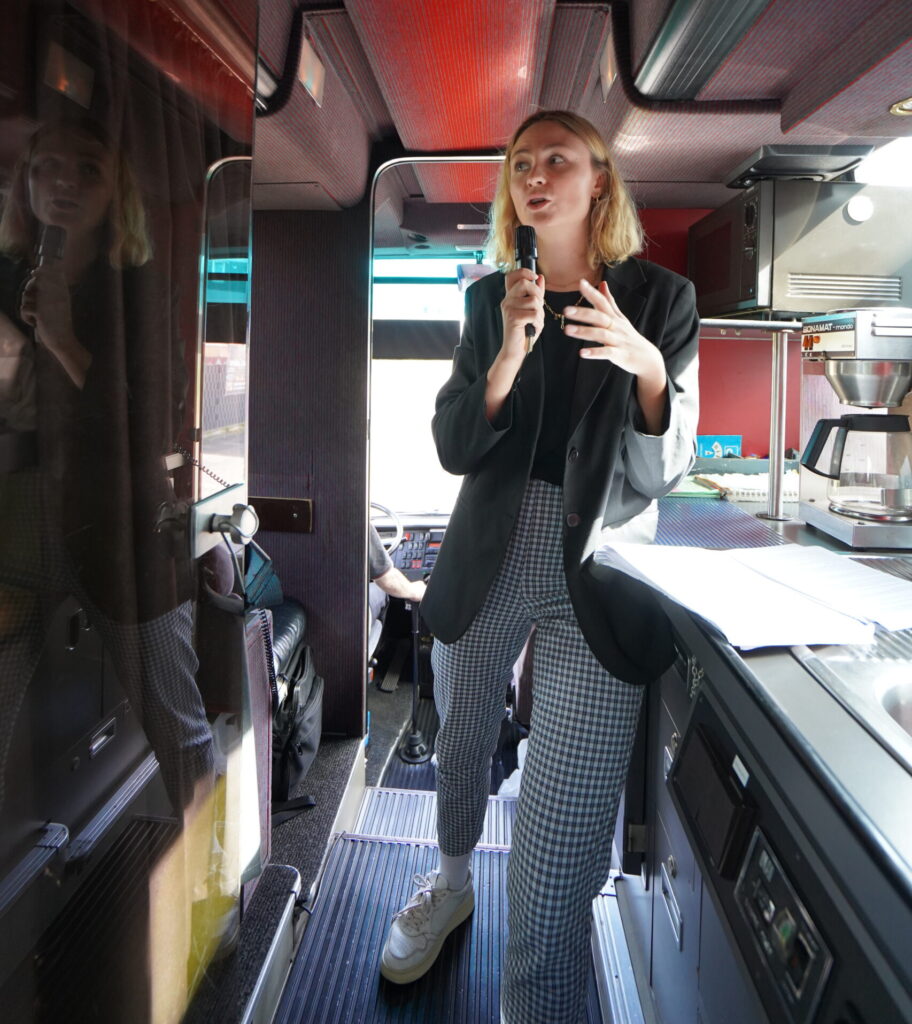
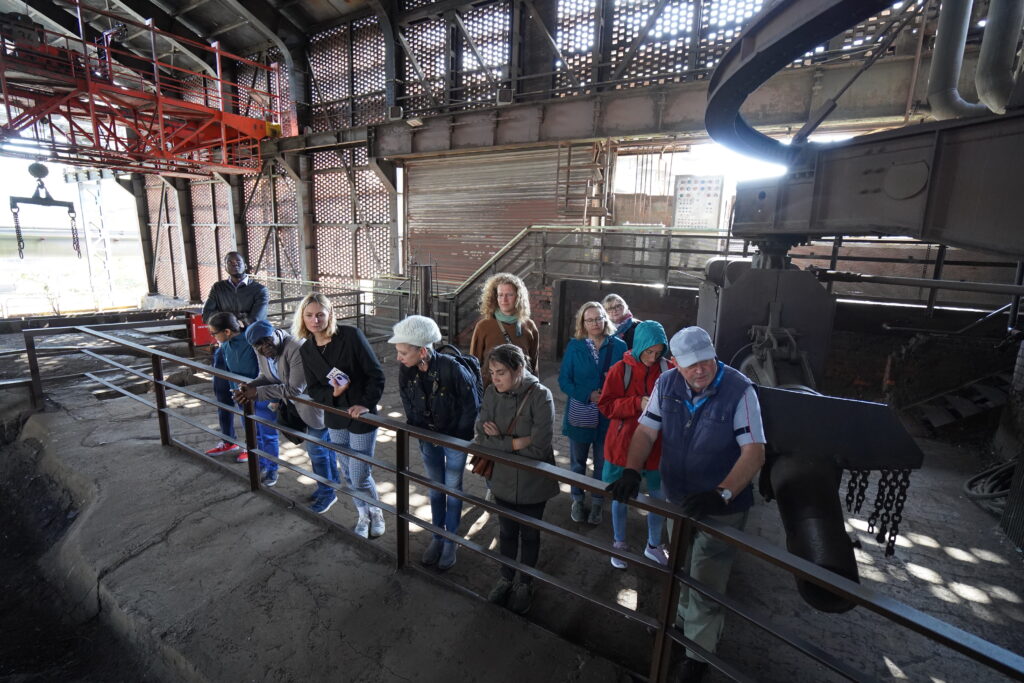
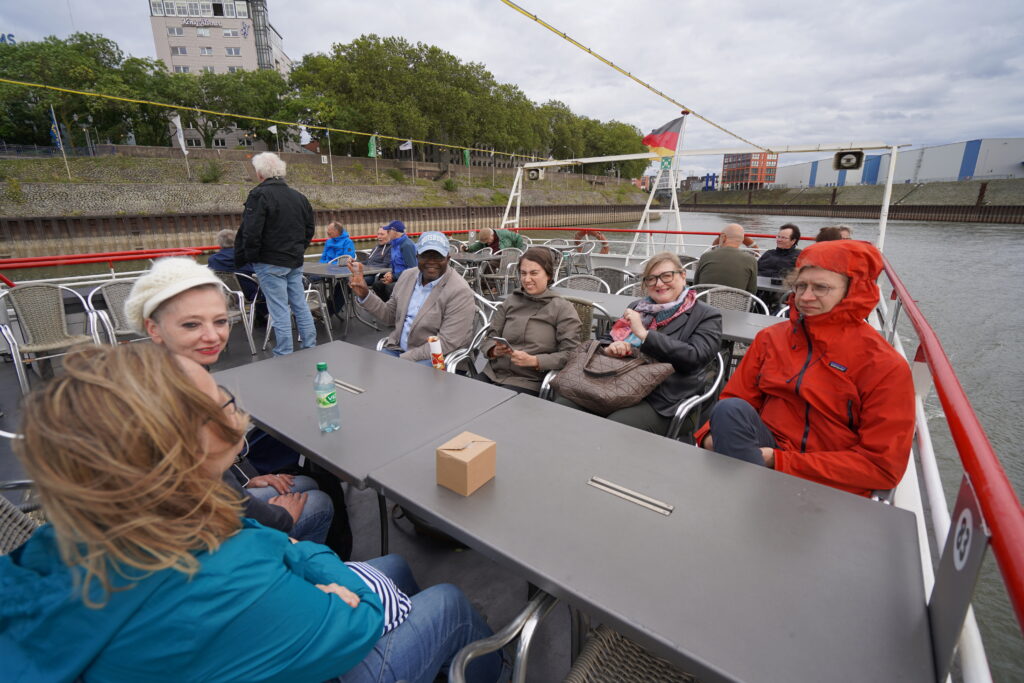
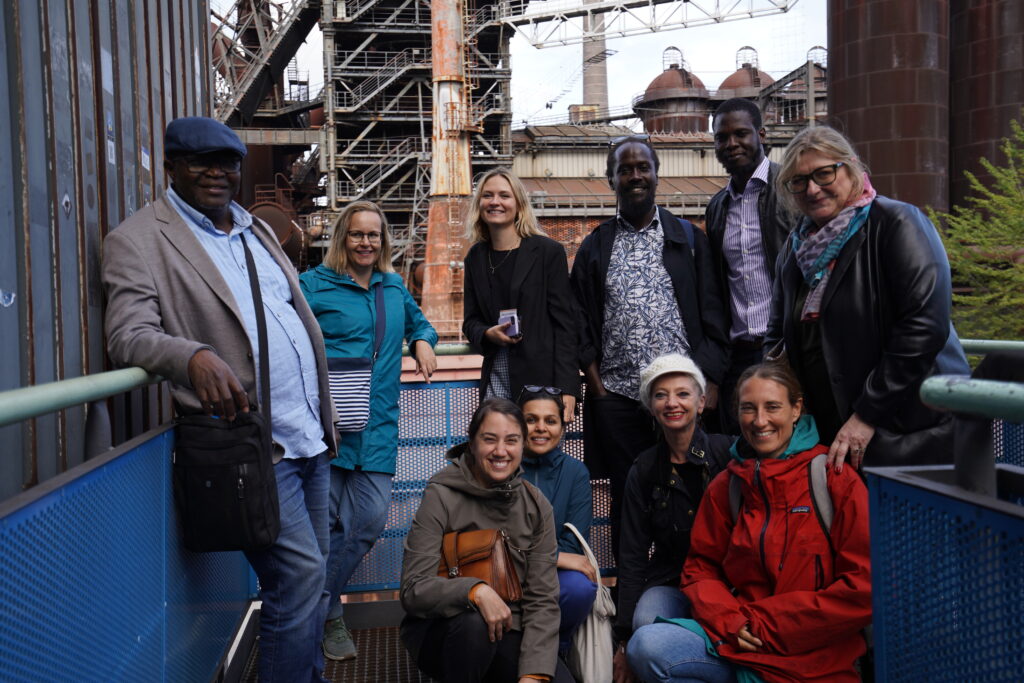
Apart from the researchers based in Germany, two of our international fellows Dr. Ibrahima Niang and Prof. Dr. Adams Bodomo who were in Germany through our De:Link // Re:Link fellowship program also joined us. Dr. Sabine Dorpmüller, the managing director of AGYA at Brandenburg Berlin-Brandenburg Academy of Sciences and Humanities (BBAW) who also serves as a member of the International Advisory Board of our De:Link // Re:Link research consortium also joined us. All logistics of our trip to Duisburg Port were organized by our dear colleagues Amy Visram and Sebastian Großmann without whom none of all this would have been possible.
i https://www.duisport.de/?lang=en
ii https://www.duisburg.de/microsites/visit_duisburg/discover_the_city/guided_tours/port-tour.php
iii https://english.news.cn/20220820/6655645693444b6594a34f87ed22e853/c.html
iv https://www.duisport.de/hafeninformation/?lang=en
v https://www.landschaftspark.de/en/
vi https://www.landschaftspark.de/en/leisure-activities/tauchgasometer/
vii https://www.landschaftspark.de/en/event-locations/overview-of-the-venues/
viii https://www.koenigpilsener-wirtshaus-duisburg.de/
